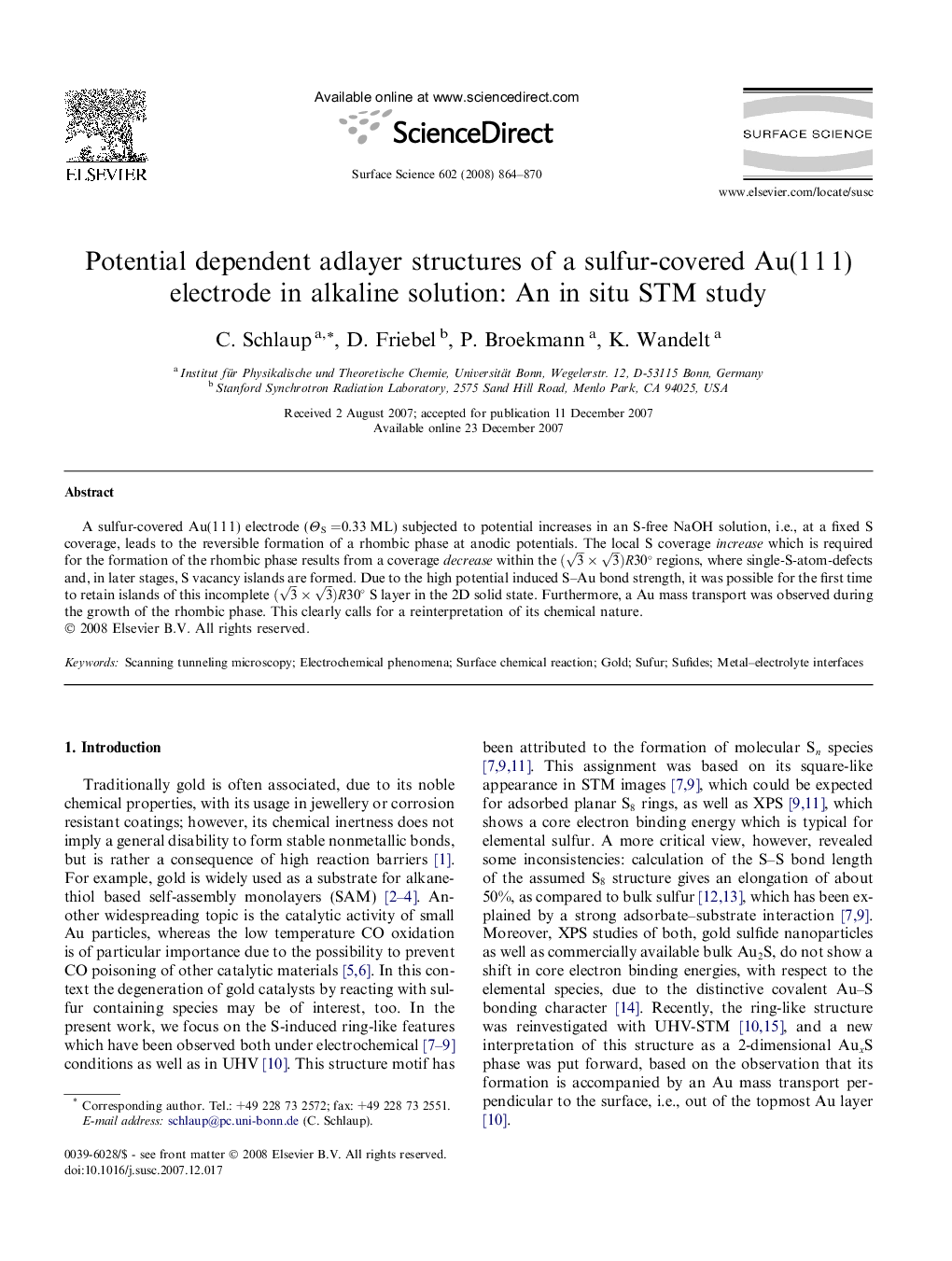| Article ID | Journal | Published Year | Pages | File Type |
|---|---|---|---|---|
| 5425284 | Surface Science | 2008 | 7 Pages |
Abstract
A sulfur-covered Au(1 1 1) electrode (ÎS=0.33 ML) subjected to potential increases in an S-free NaOH solution, i.e., at a fixed S coverage, leads to the reversible formation of a rhombic phase at anodic potentials. The local S coverage increase which is required for the formation of the rhombic phase results from a coverage decrease within the (3Ã3)R30° regions, where single-S-atom-defects and, in later stages, S vacancy islands are formed. Due to the high potential induced S-Au bond strength, it was possible for the first time to retain islands of this incomplete (3Ã3)R30° S layer in the 2D solid state. Furthermore, a Au mass transport was observed during the growth of the rhombic phase. This clearly calls for a reinterpretation of its chemical nature.
Keywords
Related Topics
Physical Sciences and Engineering
Chemistry
Physical and Theoretical Chemistry
Authors
C. Schlaup, D. Friebel, P. Broekmann, K. Wandelt,
